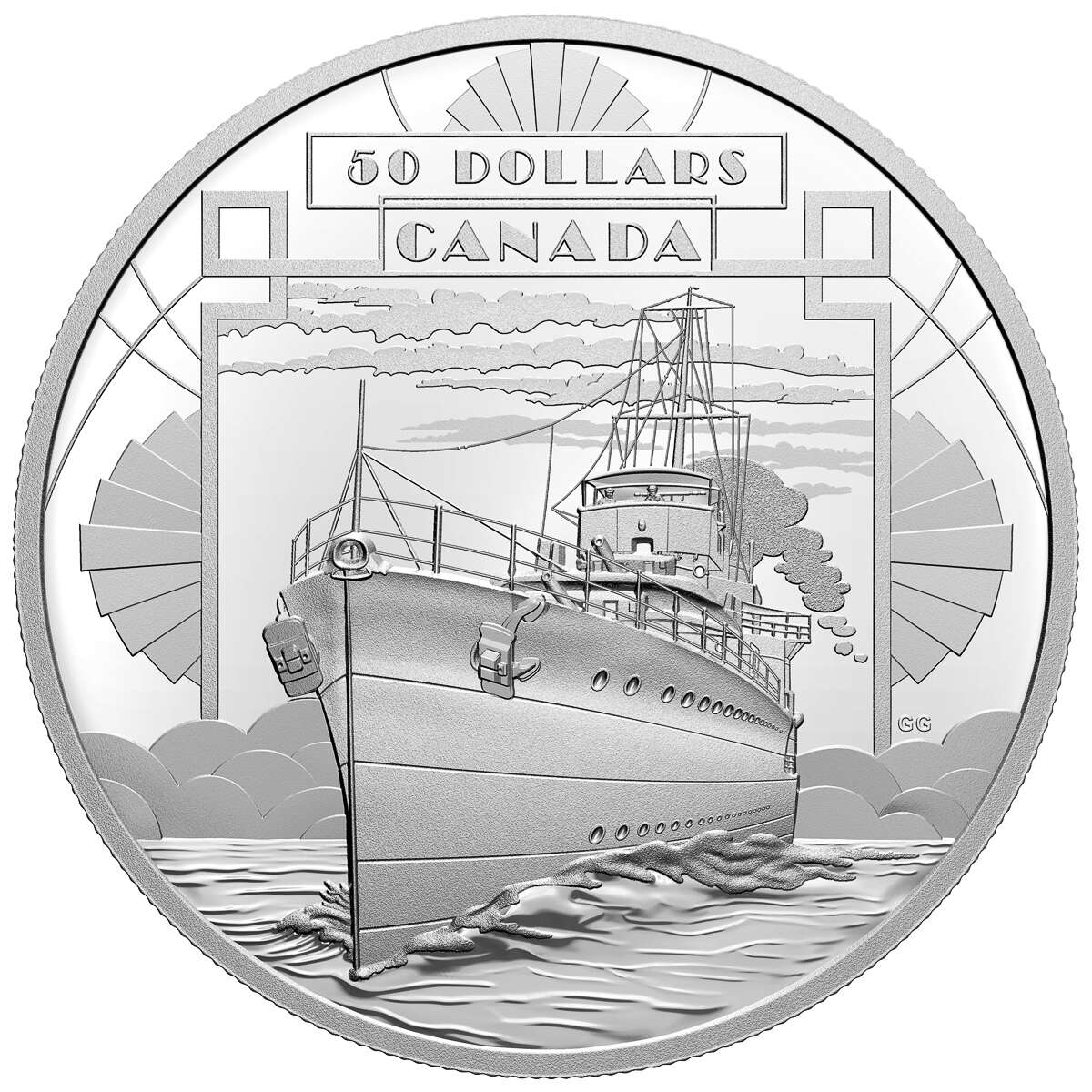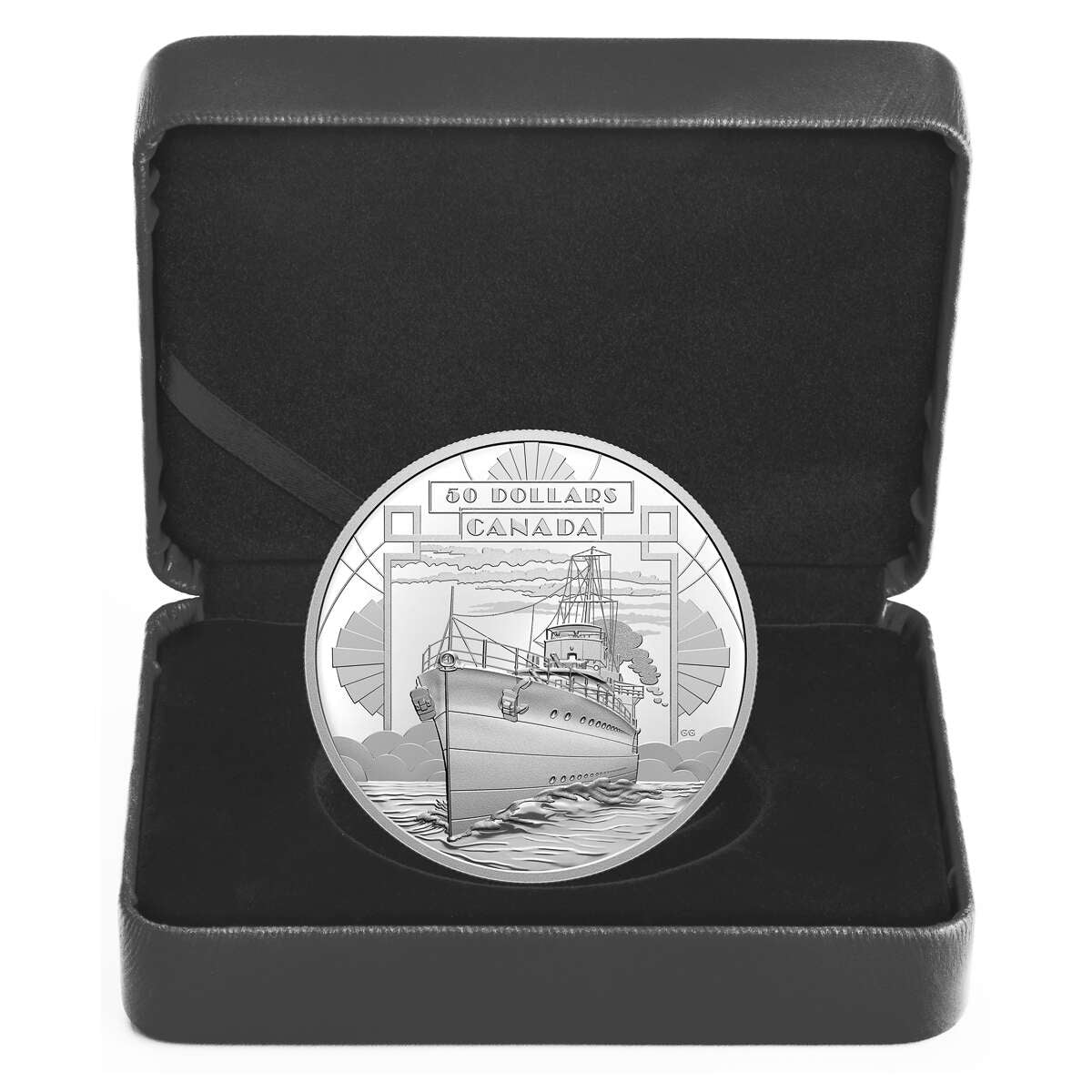Description
Discover the era of Canada’s Coming of Age with this second $50 fine silver coin in the First 100 Years of Confederation series. It is an art deco-styled view of Canada from 1914 and 1945 and features one of the first ships built for the Royal Canadian Navy (RCN). This was an era in which a young Canada was navigating uncertain waters made murkier by two wars and a crippling economic depression. Waves of immigration had landed on our shores and swept west, transforming society and enriching our cultural fabric. But the changing tides of history also carried Canada’s finest and our hopes for peace to places like Vimy, and later, Juno Beach — two key turning points that marked Canada’s coming of age, which is represented on this coin. The coin weighs just over five ounces of pure silver, and has a mintage limited to just 1,250. HST/GST exempt.
The Design:
Designed by Canadian artist Glen Green, the main design features a symbol of a Canada’s new-found standing on the world stage after the First World War. Art deco elements surround the depiction of HMCS Saguenay; built in 1931, the vessel was one of the first warships built for the Royal Canadian Navy before the naval service’s rapid expansion during the Second World War (1939-1945). The obverse combines five of the effigies that have appeared on Canadian coins since 1867 (clockwise, from top): the first effigy of Her Majesty Queen Elizabeth II by Mary Gillick, the effigy of King George VI by T. H. Paget, the effigy of King George V by Sir E. B. Mackennal, the effigy of King Edward VII by G. W. De Saulles, and the effigy of Queen Victoria by L. C. Wyon.





